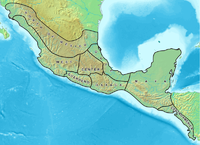
Photo from wikipedia
Abstract Surface roughening (SR) is one of the most common defects in deformation-based processing worsening surface quality and service performance of forming components, and in-depth understanding of SR is still… Click to show full abstract
Abstract Surface roughening (SR) is one of the most common defects in deformation-based processing worsening surface quality and service performance of forming components, and in-depth understanding of SR is still a non-trivial and challenging issue for defect free processes since this phenomenon is interactively influenced by so many intrinsic and extrinsic factors. This paper aims to provide a panoramic discussion on the origination and evolution mechanisms of SR considering both intrinsic and extrinsic factors. A macro‑meso scale modeling framework, including Voronoi tessellation based geometrical model and crystal plasticity finite element (CPFE) based constitutive model, is established to explore non-uniform plastic deformation at grain-scale, and then the above framework is numerically implemented and applied into the 5052-O Al-alloy tube bending. The coupling effects of intrinsic factors (i.e., grain size, grain orientation and abnormal large grain) and extrinsic factors (i.e., deformation conditions, strain accumulation and strain rate) on SR are investigated. The results show that SR in plastic deformation stems from the accumulated intergranular non-uniform deformation through thickness direction, indicating that SR is an inherent characteristic and cannot be eradicated. SR is controlled by several factors: grain size, intergranular misorientation, the abnormal large grain, strain accumulation and deformation conditions. In a practical view, these are two effective ways to improve the surface quality by reducing grain size and removing abnormal large grains. From the extrinsic factor, it also makes sense to design the processing parameters reasonably and reduce friction in order to avoid local large deformation.
Journal Title: International Journal of Mechanical Sciences
Year Published: 2018
Link to full text (if available)
Share on Social Media: Sign Up to like & get
recommendations!